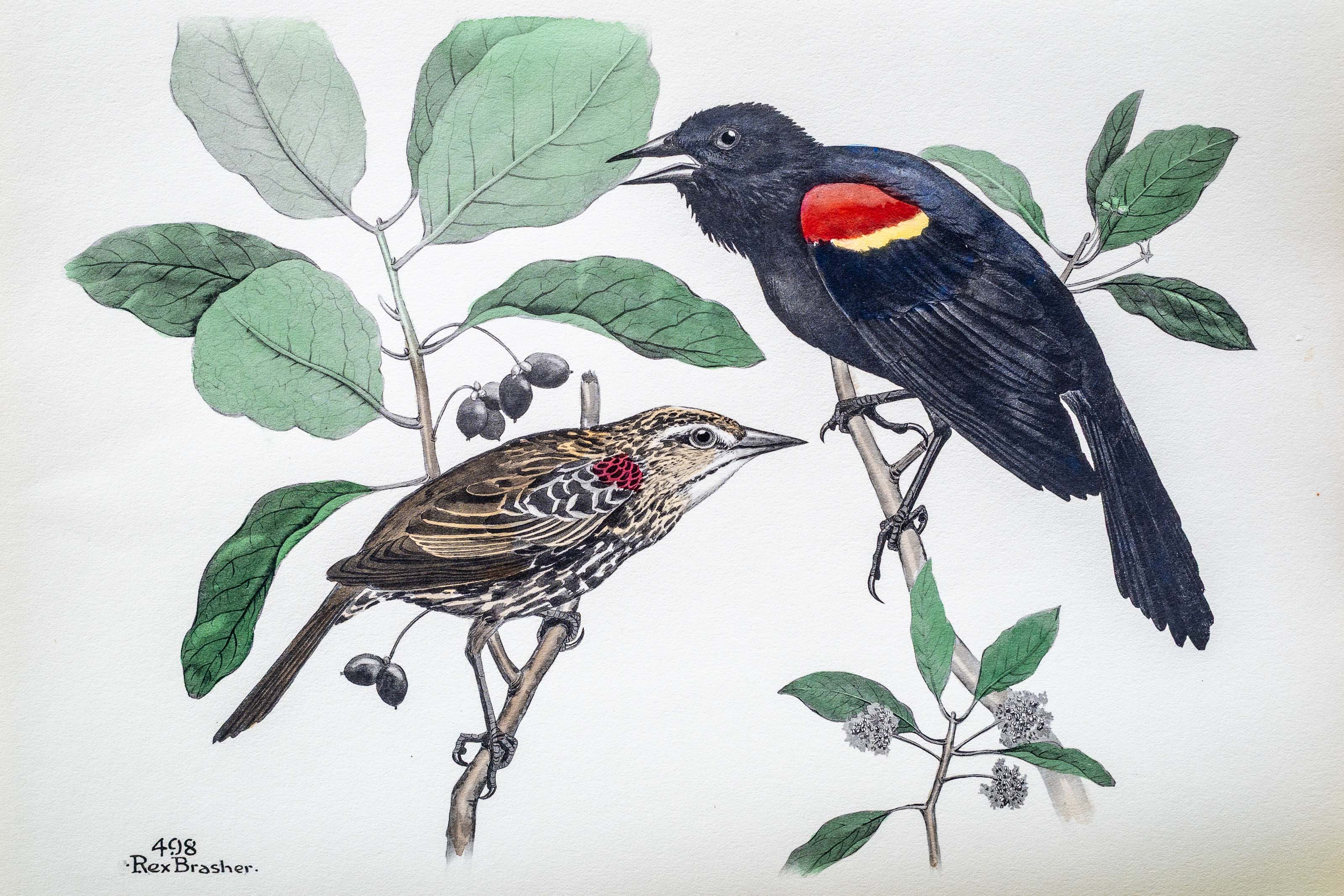
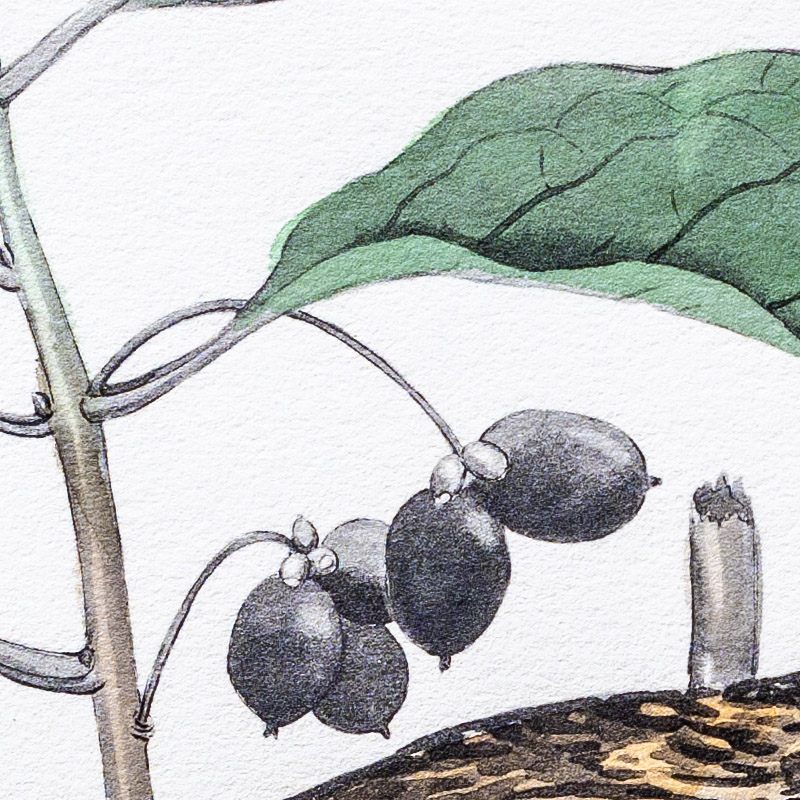
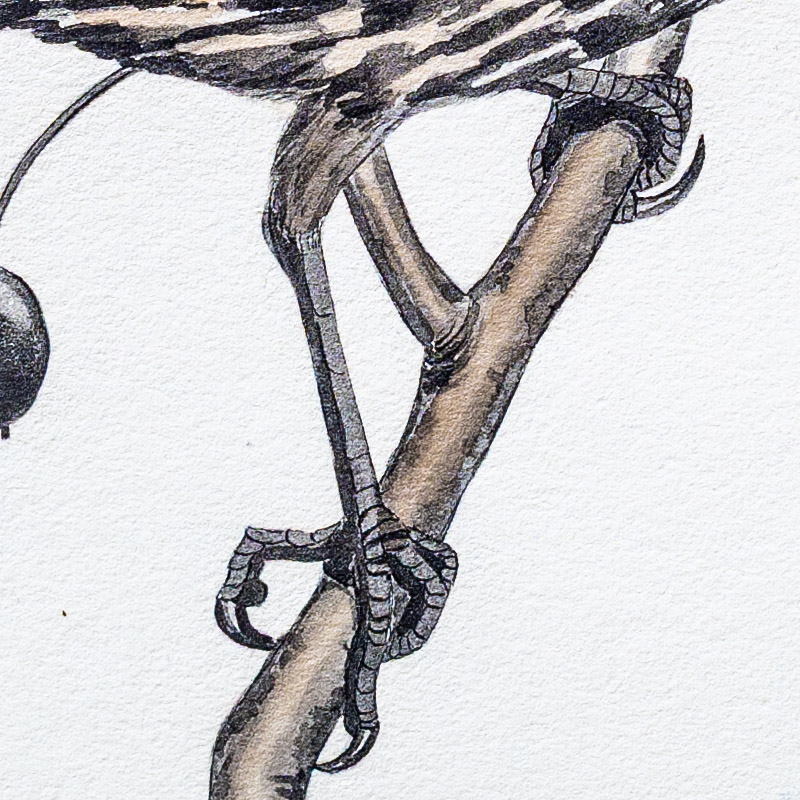
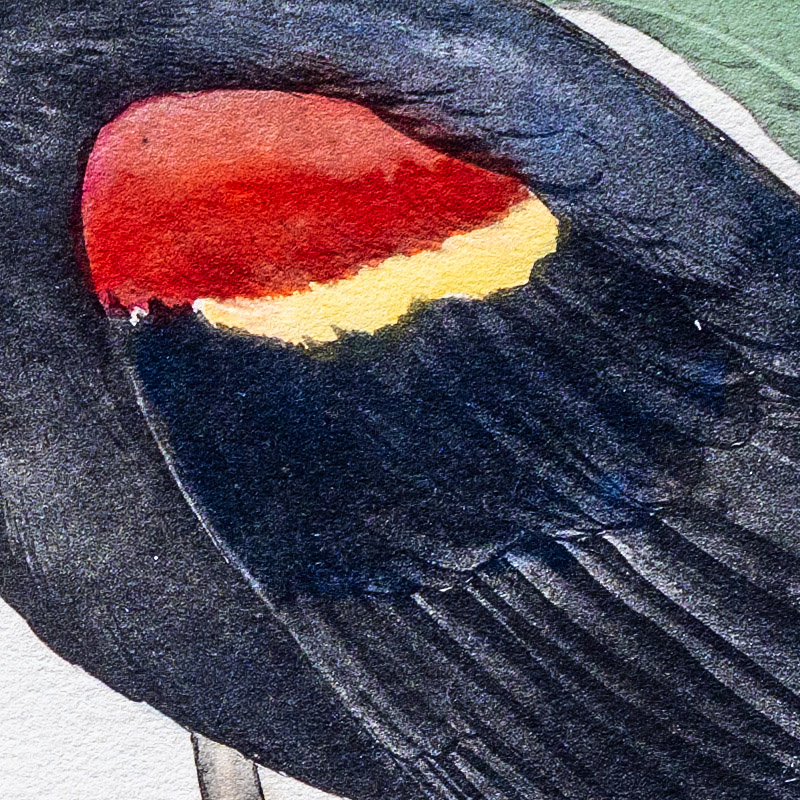

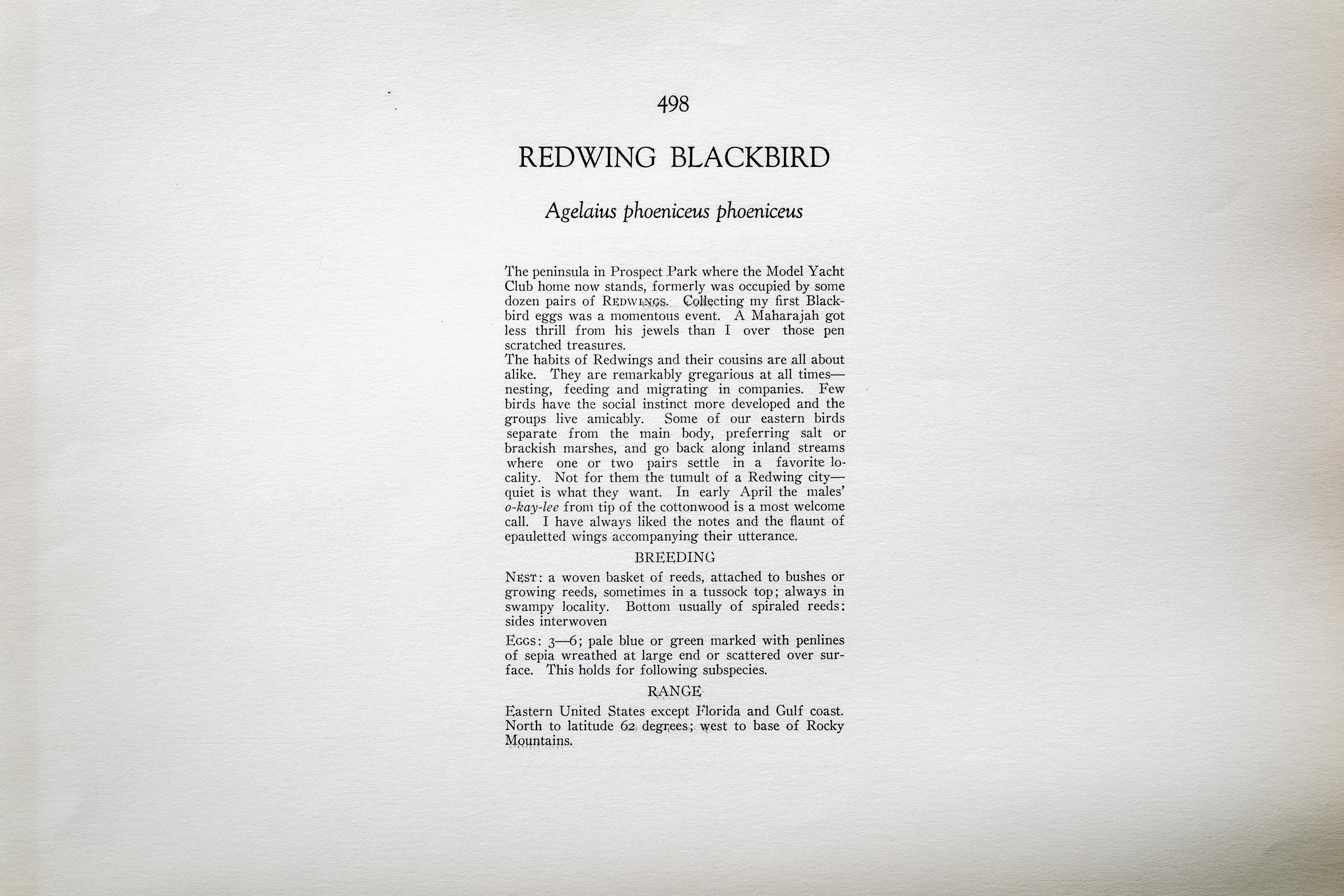

Unknown
1931
8
498
A team of dedicated board members, volunteers, and student interns has published every page in Volume 9. This volume includes 360 images of paintings and lyrical descriptions of birds, now available online for everyone to enjoy anywhere in the world. This is a monumental task. Each volume requires approximately 400 hours to photograph, edit, transcribe, catalog, and publish online. We need your support to complete this work.
If you're tech-savvy, have a good eye, are meticulous with details, and love structured data, please consider volunteering by emailing us at hello@rexbrasher.org.
We encourage all bird lovers and supporters to consider a monetary donation to support our mission to make Rex's work available for everyone. You can provide a one-time or recurring donation online.
The peninsula in Prospect Park where the Model Yacht Club home now stands, formerly was occupied by some dozen pairs of REDWINGS. Collecting my first Blackbird eggs was a momentous event. A Maharajah got less thrill from his jewels than I over those pen scratched treasures.
The habits of Redwings and their cousins are all about alike. They are remarkably gregarious at all times — nesting, feeding and migrating in companies. Few birds have the social instinct more developed and the groups live amicably. Some of our eastern birds separate from the main body, preferring salt or brackish marshes, and go back along inland streams where one or two pairs settle in a favorite locality. Not for them the tumult of a Redwing city — quiet is what they want. In early April the males' o-kay-lee from tip of the cottonwood is a most welcome call. I have always liked the notes and the flaunt of epauletted wings accompanying their utterance.
NEST: a woven basket of reeds, attached to bushes or growing reeds, sometimes in a tussock top; always in swampy locality. Bottom usually of spiraled reeds: sides interwoven.
EGGS: 3–6; pale blue or green marked with penlines of sepia wreathed at large end or scattered over surface. This holds for following subspecies.
Eastern United States except Florida and Gulf coast. North to latitude 62 degrees; west to base of Rocky Mountains.
A tree sometimes 100 feet high, distributed from Maine to Florida; west to Ontario, Michigan and Missouri.